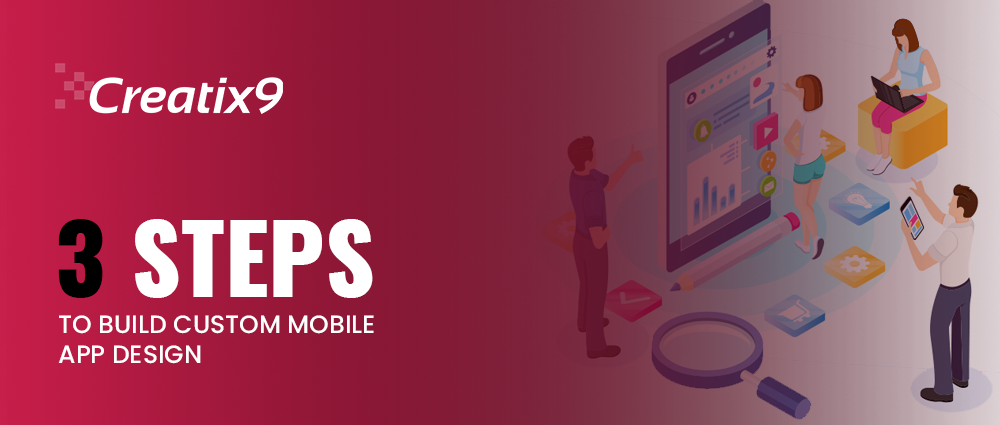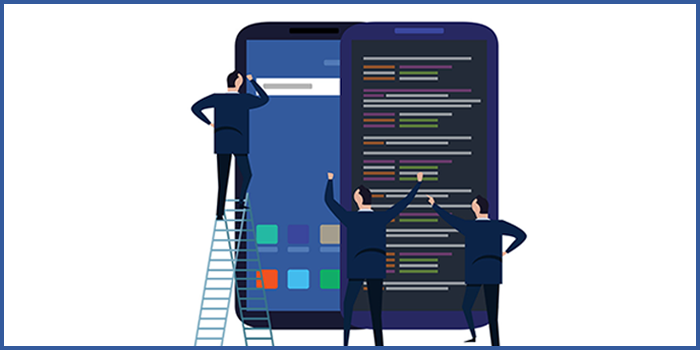
Creating a mobile app from scratch seems like a daunting task for many businesses. They think it difficult to write, run, and execute lengthy programming code that is a time-consuming job for them. They have to sit for hours and produce code to develop a mobile application. But before starting with mobile game app development, design is an essential element for smartphone apps.
The design comes first. It is an initial requirement of a mobile app to create a wireframe design architecture before moving on to coding and development. Custom mobile app design has become a new trend for businesses to build a dynamic and functional design structure of a smartphone app. The entire mobile app strategy revolves around two primary aspects that are design and process. The initial idea is to research the industry and search for the app designs that are trending nowadays. Conduct competitor analysis and start with your unique concept to come up with something new and different for the target audiences.
The custom mobile app design covers both the user interface and user experience. It combines the UX and UI and adds color schemes, fonts, buttons, widgets, to give style and shape to the mobile application.
Following are the three essential steps to build a tailor made mobile app design for your business:
Planning A Business Strategy

Planning a business strategy is the most crucial step for your company. It requires you to think and determine your needs and requirements. Why do you need to create a mobile app for your business? Does your mobile app fulfills all your goals and meet all the requirements of clients? What exceptional your app would deliver to the users or give convenience to them in executing their tasks efficiently.
You need to think about the intent and purpose of your app and what benefits will it provide to the audience. Is your app designed for a specific audience or caters to a particular sector of industry such as enterprise-level business mobile development applications. Budget plays a crucial role in your app design and development.
It depends on your customized demand and requirement to sell your app at a higher price in the market or set a reasonable rate that is accessible to all. The other aspect of the budget is on you. Do you have enough investment to hire a team of in-house developers to build an app or outsource your app development to an external third-party mobile agency? You also need to conduct a competitor analysis and research the local market to find the profit and revenue potential of your app.
You need a specific, measurable, attainable, relevant, and timely (SMART) mobile app strategy for your business. It can give you a profitable return on investment on your sales of the app. Select an Apple or Google app store for the increase of visitors to search, install, and download your app. The app store shows the ranking status of mobile apps according to their subscription.
Creating A Mobile App

Building a mobile application consists of designing, developing, testing, debug, and deploying. These are a step by step procedures that provides a well-organized and systematic approach. It all begins with app design. The process of app design involves the platform requirement that includes android, iOS, windows, and Blackberry operating systems. The mobile application should run and operate on various smartphone and tablet devices. It should have a seamless user interface (UI) that result in an awesome user experience (UX). The app should be built with fast and intuitive navigation to explore the design and browse the content.
The purpose of overall app designing should be to build a dynamic and robust front-end mobile design interface for your business app. You can use professional tools to create a beautiful and engaging design of a smartphone app that captivates the users and compels them to stay longer on the app.
The use of app design tools like Adobe XD, Sketch, Figma, and Photoshop brings life to your mobile app and add exceptional charm to it. You can also use the latest version of bootstrap to build HTML, CSS, and JavaScript applications. Create the wireframe, mockups, and prototypes for adding multiple versions of mobile applications and choose the preferred one.
Mobile App Development

The app development phase includes the coding of mobile applications in different programming languages. It covers the front-end and back-end development areas. The front-end involves Html, CSS, JavaScript, JQuery, Ajax, XML, and JSON, while the back-end involves logical programming languages like Java, Kotlin, C Sharp, C++, Objective C, and Swift. It depends upon your business requirement to develop an app for a native, progressive web, hybrid, and cross-browser platform. Testing and Debugging are next level phases of app development that moves ahead to the final launch of the mobile application.
Conclusion
Hence, in a nutshell, these above-mentioned are the proven steps to build a custom mobile app design. The trend for mobile app development revolutionizes the way businesses do. It connects with the latest technologies of artificial intelligence, cloud computing, and augmented reality programming to support the mobile app and increase its functionalities and features for customers.
Also Read: Develop A Mobile Application In Eight Easy To Learn Steps

